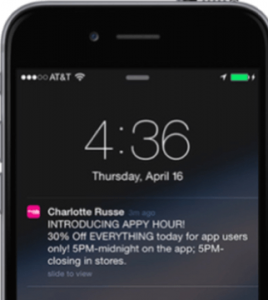
“Meetings are toxic.” – Jason Fried & David Heinemeier Hansson
If you agree with Jason and David, you’re not alone. In a survey of U.S. professionals conducted by Salary.com, meetings ranked as the number one office productivity killer. For many marketers, meetings fill what feels like an exponentially increasing number of hours of the workweek. While some meetings can be avoided, here are our favorite tips for making the most of your conference room time.
1. Ban meetings for meeting’s sake.
Before holding a meeting simply because it’s on your calendar, it’s what’s always been done, or my favorite reason, “because why not,” make sure it’s clear to you what you hope to accomplish during the get-together. If you don’t know why you want or need to meet, chances are your attendees won’t get much value out of it, either.
“Standing meetings with vague purposes, such as “status updates,” are rarely a good use of time,” says Neal Hartman, senior lecturer in managerial communications at MIT Sloan School of Management. Have a weekly status update scheduled for every Wednesday, but just talked through everything on Tuesday? If there are no new updates and you find yourself meeting simply because the time is already scheduled on your calendar, consider canceling the get-together entirely or sending out a group email instead.
If you find a meeting is truly necessary and valuable, here are our favorite tips for making the most of your time in the conference room.
2. Create an agenda and provide it to attendees.
If you’re running the meeting, create an agenda with the specific topics you’d like to cover and distribute it to attendees ahead of time. This allows attendees to better prepare and facilitates more productive conversations within the meeting itself.
If there are any particular assets you’ll be discussing – for instance, last month’s performance, a particular blog post series, or a new content offer, try to provide attendees with it ahead of time, so they’ll have a chance to look over it and formulate their thoughts before coming to your get-together.
3. Make your meeting a laptop (and phone, tablet, phablet, Google Glass, and Tamogatchi) –free zone.
Your boss is fifteen minutes into explaining your team’s marketing objectives for the next quarter. You’re diligently taking notes on your laptop when all of a sudden you see an email pop up from your designer, who has the final proof of an eBook you’ve been working on for the past month. Eager to see what the piece looks like, you click over to your email and check out the proof. Soon, you’re 20 pages deep into the eBook and have missed the entire second half of next quarter’s objectives.
Sound familiar? Sure it does – we’re all guilty of being distracted from work by work – or a text message, Facebook alert, or otherwise. To avoid this from happening and promote everyone staying focused and on track during a meeting, consider banning technology from some – or all – meetings. Encourage note takers to use good, ol’ fashioned pen and paper, and those tech junkies who can’t bear to part from their laptops (or, more likely, have another meeting immediately following) can bring computers but leave them closed.
3. Stay on topic.
“Nothing derails a meeting faster than one person talking more than his fair share,” says Mr. Hartman. Keep this in mind when running your meetings: encourage quieter attendees to speak up but discourage any attendees from “soapboxing” their way through your agenda.
4. Be timely.
It goes without saying that you should always try your best to be on time to meetings, but that can sometimes be difficult when you’re booked back-to-back and preceding events run long. Moreover, marketers are a notoriously creative, conversational bunch (it’s our job, after all) – and as such, marketing team meetings can easily expand to fill the amount of time allotted to them – and then some.
To keep your team meetings from running long and keep everyone on time, try scheduling them and creating your agendas so that your meetings end 5 minutes early. While you may not actually be able to wrap up five minuets early every time, the built-in buffer time allows you some wiggle room if your agenda does runneth over.
5. Send out meeting notes.
You put together a bullet-proof agenda, banned technology, kept everyone on topic, and even managed to end five minutes early. You ran the perfect meeting! So it goes without saying that everyone walked away with the same, crystal-clear understanding of your key takeaways, any action items, and what each attendee is personally responsible for completing and by when – right? Wrong. More often than not, there are lingering questions about and interpretations of what was discussed and what each person’s next steps and responsibilities actually are. To reduce confusion and increase the meeting’s benefit to your team, be sure to send out a memo or meeting notes to all attendees within 24 hours of the event. Don’t have time? Designate an attendee as the official note-taker and have them send out the follow-up notes.
6. Bonus: Eliminate an over-dependence on meetings.
We’re all for “collaboration” and “teamwork” (in fact, we pride ourselves on it). But being collaborative and working as a team is not the same thing as holding a meeting to discuss every decision to make or direction to take. Not every decision should be made by committee: meet for the right reasons, not simply because you don’t know what else to do.
Happy meeting!
(285)
Report Post





